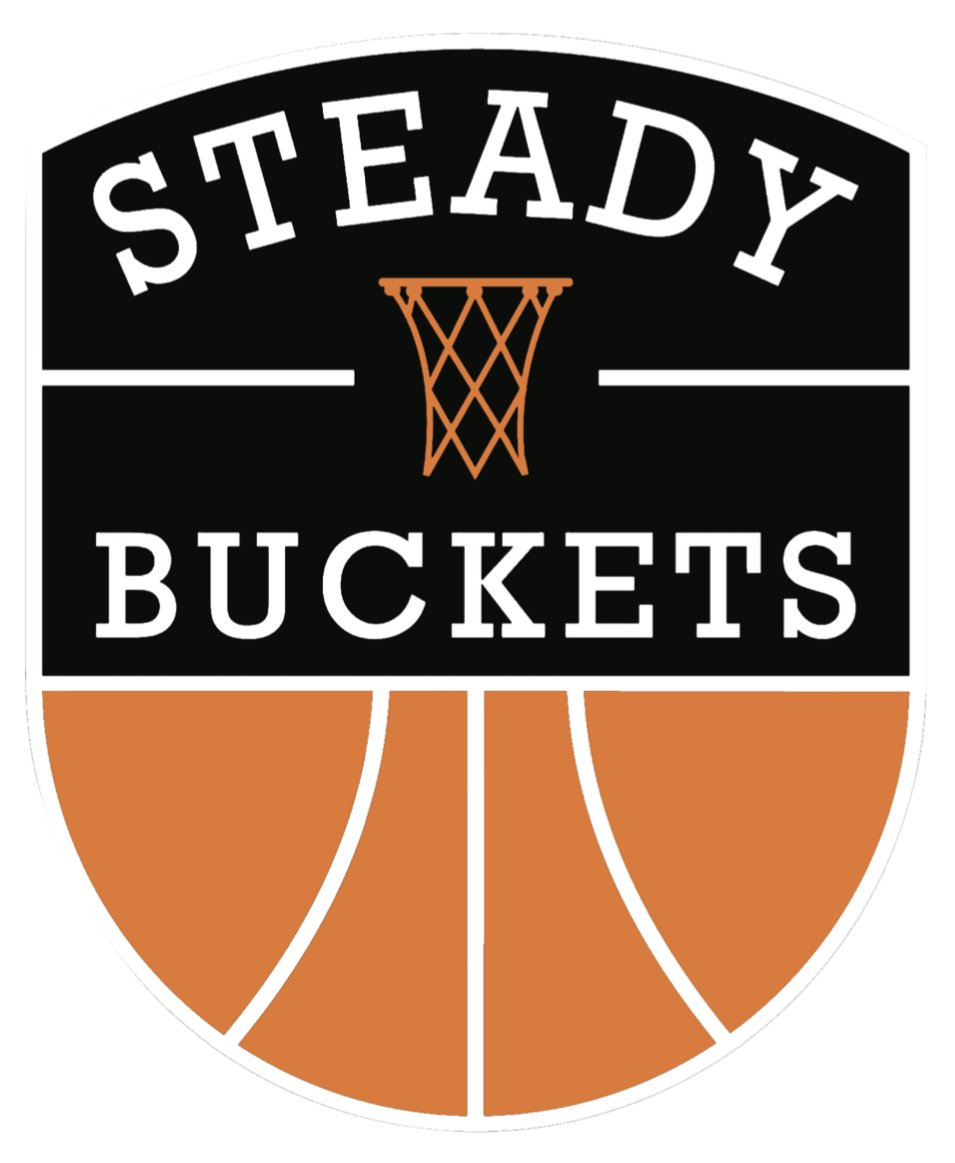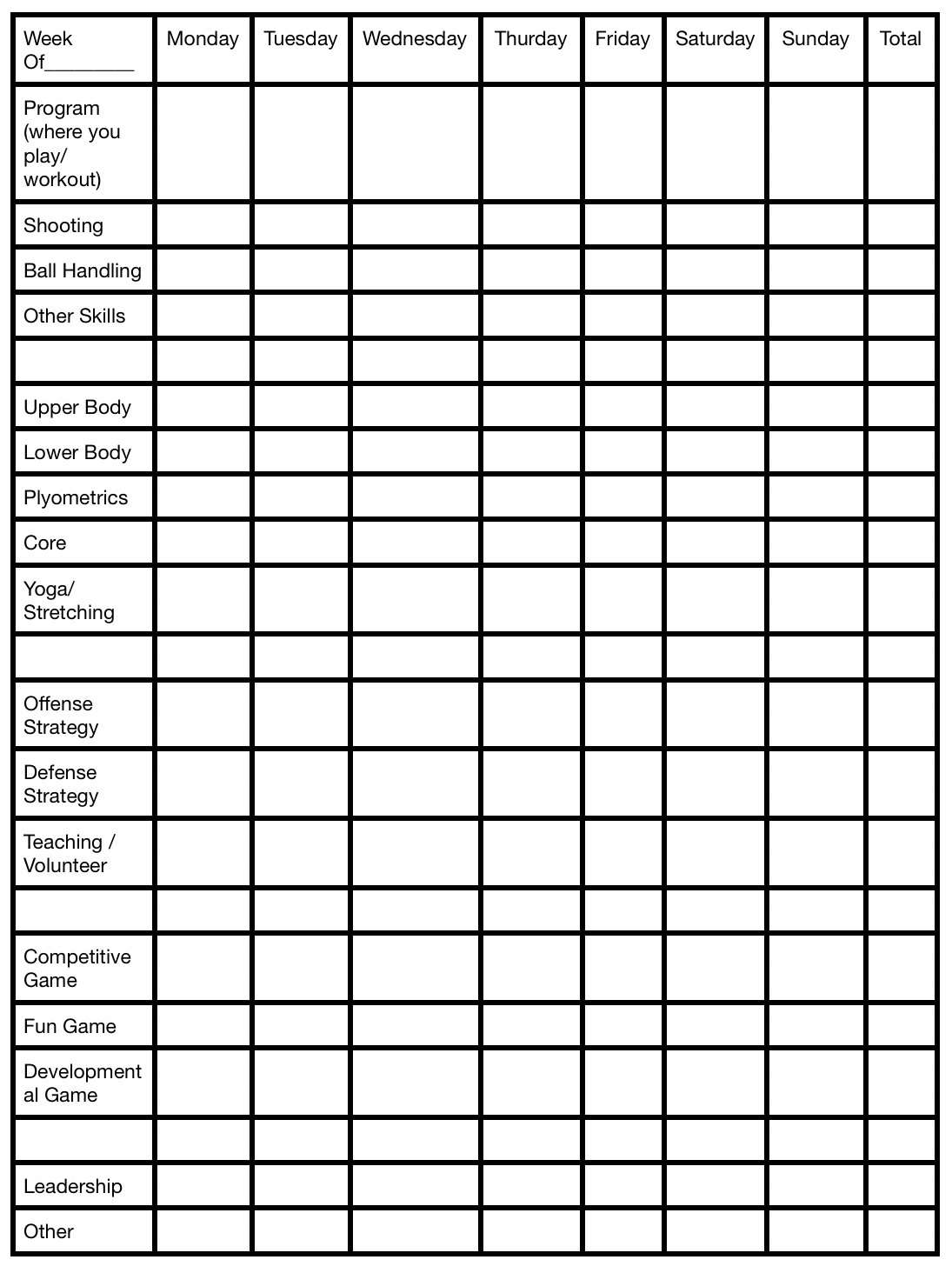SB programs are designed to accommodate every type of player from the beginner to the competitive player in a numbers of ways. Because SB offers so many options, players can either design their whole basketball “diet” at SB or use SB to fill in the gaps that their other programs don’t concentrate on. Either way, the goal is for all of our players to have access to the information and opportunities to achieve a healthy basketball diet.
We used the word “diet”, because we want members of our community to understand SB through the lens of “basketball health” and to understand that the workouts you attend and drills you practice are the equivalent of the nutrients you give your body.
According to the CDC, a healthy diet is comprised of:
Fats: 15-30% Carbohydrates: 55-75% Sugars: <10% proteins: 10-15% Fruits & Vegetables: >400 grams / day * And of course the more seriously you take your nutrition the more detailed this table becomes. Below I’ll suggests both a simple and more detailed healthy basketball diet.
So, What does a healthy basketball diet look like?
Just like nutrition, everyone has different goals and priorities, so there is no one size fits all answer. However, a balanced diet within these suggested parameters is what SB is designed to help our players accomplish.
A HEALTHY BASKETBALL DIET
Skill Development : 20-50% Speed/ Agility & Strength: 10-30% Basketball IQ: 5-20% Games: 10-40% Leadership Development: 1-10%
This is a simple way to think of a healthy diet. Now lets get a little more detailed for our more committed players.
A HEALTHY BASKETBALL DIET (with details)
Skill Development : 20-50% Shooting 10-30% Ball Handling 10-30% Other Skills 10-20%
Speed/ Agility & Strength: 10-30% Upper Body Strength 5-15% Lower Body Strength 5-15% Core Strength 5-10% Plyometrics 0-20% Yoga/Stretching 0-10%.
Basketball IQ: 5-30% Offense strategy and execution <10% Defense strategy and technique <10% Situational Basketball <10% Coaching & Reffing <10%
Games: 10-40% Competitive <20% Fun 5-30% Developmental 5-15%
Leadership Development: 0-10% Leadership Talks on zoom < 5% Volunteer Coach or Ref < 5% Other. < 5%
So, how do I build a schedule that is designed to achieve a healthy basketball diet?
Step 1:
Think about your goals and priorities for the next 3 months. Decide roughly what percentage of your time that you commit to basketball should be designated to the categories posted above. If there is anything else that you think is important, but isn’t posted above, add it to your diet. This is not a precise process and we encourage you to personalize your own basketball diet as much or as little as you’d like.
Step 2:
Before making a plan create a spread sheet in order identify which parts of your diet are already healthy, which are being developed in excess and which are being neglected. Click here for a printable spread sheet template. It looks like this:
Step 3:
Now transfers your current weekly totals into a weekly sheet so you can calculate your current weekly percentages. See how your current weekly diet compares to your ideal weekly diet (Click here for a printable template)…
Step 4:
Now lets build a schedule (but first, some tips)…
“If I skip my ball handling routine for one day nobody notices. If I skip two days, I notice. When I skip three the guy guiding me notices. More than 3 days, everyone notices.” - Manny Quezada (international professional point guard)
I saw an interview with Larry bird (I can’t find it other wise I’d share), where he talks about his shooting routine. He said he’d go in the gym and shoot for 5-10 minutes ands if everything felt great and he was making shots, he’d leave. If something felt off or he was missing, he’d stay for hours until he got it right.
TIP #1 - When building your schedule, you’ll find that you have to make difficult sacrifices in some categories in order to build others in. Fitting everything you want/need together often feels like solving a jigsaw puzzle. It is, so don’t get frustrated or give up. Think of it as something you have to tinker with in order to solve.
TIP #2 - We practice fundamental skills for two reasons: skill acquisition and skill maintenance. Skill acquisition takes hours up hours and weeks upon weeks. Skill maintenance can take as little as a few minutes a day. Look for small opportunities to do maintenance work especially in areas that you are having trouble finding time for. You can sneak in a 10 minute ball handling routine before practice starts. You can keep do strength training before you leave the house or before bed. You can listen to a leadership video in the car or on the subway. Taking 20 form shooting shots under the basket takes 1 minute.
TIP #3 - Because skill acquisition is so time consuming, make sure your diet takes into consideration enough time to work on true weaknesses. Once a weakness becomes a strength, you may be able to dial back that time commitment and just do maintenance. You can now use that extra time for a new priority.
TIP#4 - Your priorities and opportunities will change throughout the year, so take into consideration how your diet will naturally change based on when games are being played. Off seasons should be weighted towards skill acquisition and strength/speed work. Preseason will probably have a lot of basketball IQ as coaches each the offense and defensive strategy. In season you’ll naturally play more games. So, your schedule should be changing all the time. Don’t think of this as a tool to hold yourself accountable, think about it as something that will point you in the right direction.
You can either start now or read below for a glossary of the areas of development listed on the spread sheet:
Skill Development
Shooting
Passing
Ball Handling
Defensive Skills
Strength/Speed/Agility
Upper Body Strength
Lower Body Strength
Core
Plyometrics
Yoga/Stretching
Basketball IQ
Offensive strategy
Offensive set plays
Defensive strategy
Situational basketball
Coaching/Reffing
Games
Competitive
Fun
Developmental
Leadership
Zoom Lectures
Coaching/Reffing


